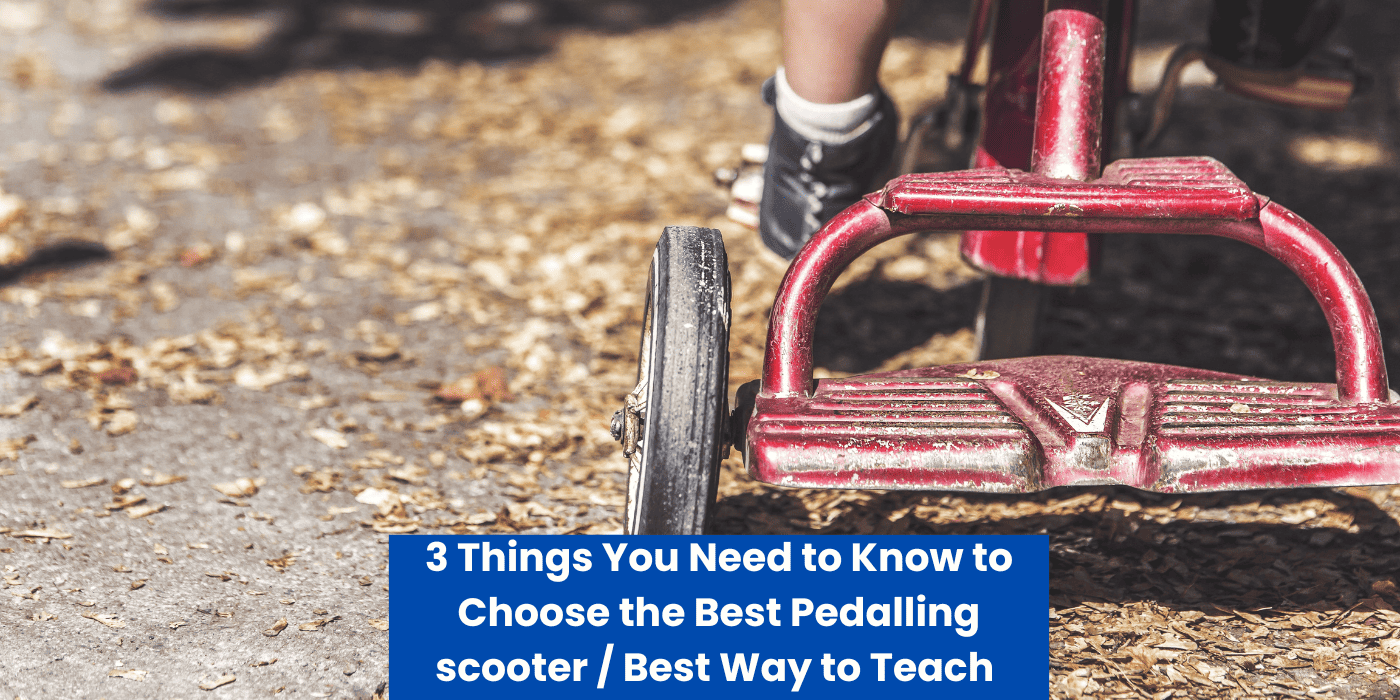Riding a tricycle is a fun and exciting activity for kids. It helps them develop their motor skills, balance, and coordination.
However, teaching your child how to ride a tricycle can be challenging, especially if you don’t know where to start. In this article, we will discuss the best ways to teach kids to ride a tricycle, from choosing the right tricycle to progressing to a bicycle.
So, if you’re wondering how to choose the best pedalling scooter / best way to teach your little one, read on!
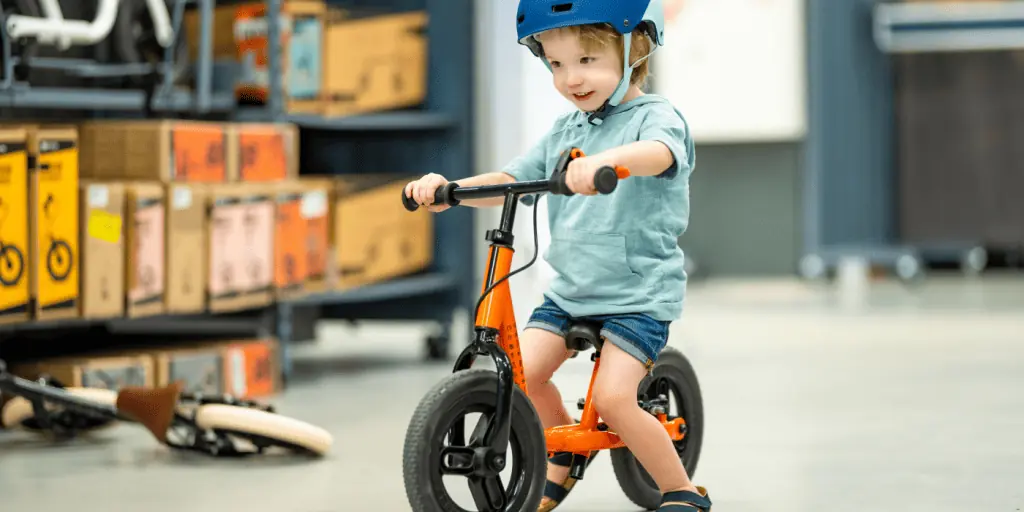
Choosing the right tricycle is the first step in teaching your child how to ride. Look for a tricycle that is appropriate for your child’s age and size, with adjustable features that can grow with your child. You should also consider safety features such as a sturdy frame, comfortable seat, and reliable brakes. Once you have found the right tricycle, you can start preparing your child for the ride.
Preparing for the ride involves ensuring that your child is dressed appropriately for the weather and wearing a helmet. You should also make sure that the tricycle is in good working condition and that your child is supervised while riding.
Teaching pedaling and steering, enhancing balance and coordination, and practicing in a safe environment are also important steps in teaching your child how to ride a tricycle. By following these steps, you can help your child become a confident and skilled tricycle rider.
Key Takeaways
Choosing the right tricycle is crucial for your child’s safety and comfort.
Preparing for the ride involves dressing appropriately and ensuring that the tricycle is in good working condition.
Teaching pedaling and steering, enhancing balance and coordination, and practicing in a safe environment are essential steps in teaching your child how to ride a tricycle.
Choosing the Right Tricycle
When it comes to teaching your child to ride a tricycle, choosing the right one is crucial. Here are some factors to consider when selecting a tricycle for your child:
Size and Design
Make sure the tricycle is the right size for your child. A tricycle that is too big will be difficult for your child to maneuver, while a tricycle that is too small may not provide enough stability.
Look for a tricycle with a sturdy base and a seat height that allows your child to comfortably reach the pedals. A tricycle with a wide seat can provide extra stability and support. Some tricycles allow you to secure child’s feet to the pedals, offering additional stability.
Lightweight
A lightweight tricycle is easier for your child to handle and maneuver. It also makes it easier for you to transport the tricycle to different locations.
Value
Consider the value of the tricycle. While you don’t want to skimp on quality, you also don’t want to overspend on a tricycle that your child will quickly outgrow. Look for a tricycle that is durable and provides good value for its price.
Remember, the right tricycle can make all the difference when it comes to teaching your child to ride. By considering factors such as size, design, weight, and value, you can help ensure that your child has a positive and successful experience learning to ride a tricycle.
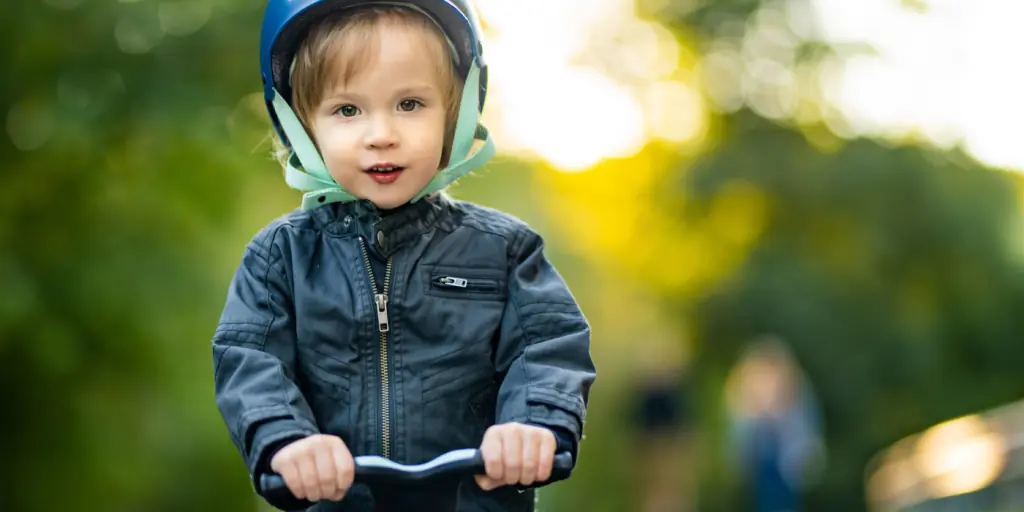
Preparing for the Ride
Before your child takes their first ride on a tricycle, it’s important to make sure they are prepared. Here are some things you can do to get them ready:
Choose the Right Tricycle
Make sure you choose a tricycle that is appropriate for your child’s age and size. For toddlers, a push trike is a good option. For preschoolers, a balance bike or a larger tricycle may be more suitable. Whatever you choose, make sure it’s sturdy and well-made.
An ideal seat for little ones includes some back support, running 4-5 inches high. A bucket seat will also help support the child’s torso.
The size should suit your little one too; your child should be able to reach pedals and handlebars comfortably without leaning forward too much. Ensure that the tricycle seat is at the correct height for your little one, this will help your child build momentum and achieve more effective forward motion.
Ensure Safety
Safety is paramount when it comes to riding a tricycle. Make sure your child wears a properly fitting helmet at all times. You should also consider elbow and knee pads to protect them in case your child falls.
It’s also important to make sure the tricycle is in good working order, with properly inflated tires and functioning brakes.
Build Confidence
Riding a tricycle can be a little scary for some kids, especially if they’ve never ridden one before. Encourage your child to practice on a flat, smooth surface like a driveway or sidewalk.
Start with your child seated comfortably on the tricycle and let the push the tricycle forward with their feet. Once they’re comfortable with that, encourage them to pedal.
Make it Fun
Riding a tricycle should be a fun and enjoyable experience for your child. Make it a game by setting up an obstacle course or a race. You could also take a ride with them and explore the neighborhood together. The more fun your child has, the more likely they are to want to keep riding and improving their skills.
Encourage Independence
Riding a tricycle is a great way for kids to gain independence. Encourage your child to take control of the tricycle and make decisions about where to go and how fast to pedal. This will help build their confidence and give them a sense of ownership over their new toy.

Teaching Pedaling and Steering
Now that your child has mastered climbing on and off the tricycle and initiating movement, it’s time to focus on pedaling and steering. These are two key skills that your child needs to ride a tricycle confidently.
Pedaling
Teaching your child to pedal is an important step in learning to ride a tricycle. Start by showing your child how to place their feet on the pedals and push them forward and backward. Its common for children to push backwards before they learn to pedal forwards.
Initially, it may be helpful to facilitate forward movement by holding child’s lower legs with a gentle forward pressure, with bent knees and pushing feet towards the ground. You can then encourage your child to independently use their legs to push the pedals so that the the tricycle moves forward.
You can also try the following tips to help your child learn to pedal:
Use a push handle at the back of the tricycle to help your child pedal and steer.
Start with short distances and gradually increase the distance as your child gets more comfortable with pedaling.
Encourage your child to practice pedaling on a flat surface before moving on to hills or uneven terrain.
Steering
Steering is another important skill that your child needs to learn to ride a tricycle. Teach your child how to turn the handlebars to steer the tricycle in the desired direction. Encourage your child to look in the direction they want to go and turn the handlebars accordingly.
Here are a few tips to help your child learn to steer:
Start by practicing steering in a straight line before moving on to turning.
Encourage your child to use their body weight to lean into turns.
Practice turning left and right in a safe and open area like a playground or backyard.
Remember that learning to ride a tricycle takes time and practice. Be patient and encourage your child to keep trying. With your guidance and support, your child will soon be riding their tricycle with confidence and joy.
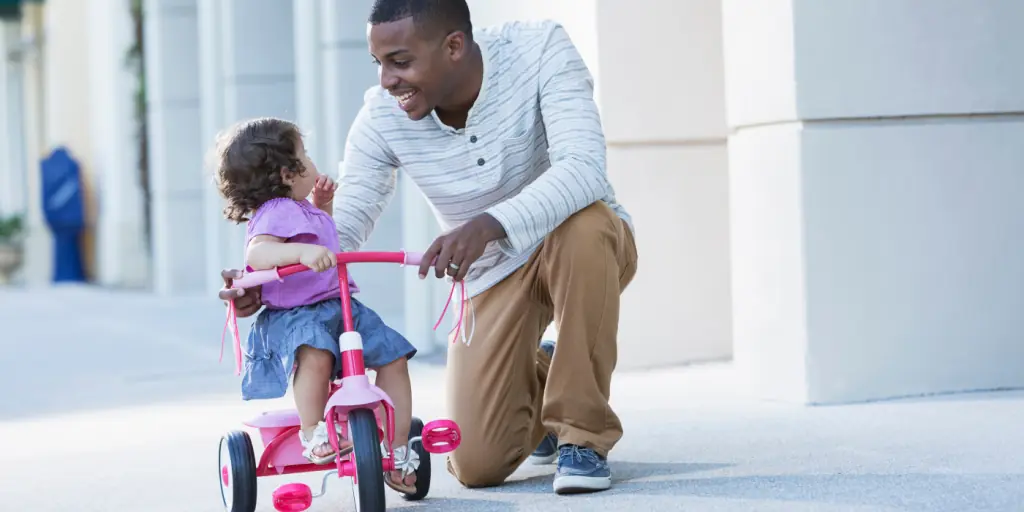
Enhancing Balance and Coordination with a pedalling scooter / best way to teach
Teaching your child to ride a tricycle is an exciting milestone that helps them develop their balance and coordination. Once a child has mastered how to scoot forward, it’s time to move on to the next step- using a pedalling scooter.
Riding a tricycle requires your child to use their legs to pedal, their hands to steer, and their body to maintain balance. Here are some tips to help enhance your child’s balance and coordination while riding a tricycle.
Choose a tricycle with rear wheels
When choosing a tricycle for your child, look for one with rear wheels. Rear wheels provide stability and support, making it easier for your child to balance. As your child becomes more confident, you can remove the rear wheels to increase the challenge and help them develop their balance and coordination.
Use a balance bike
Balance bikes are similar to tricycles but have no pedals, allowing your child to focus on balancing and steering. Once your child has mastered the balance bike, they will be better prepared to ride a tricycle.
Practice pedaling and steering
Pedaling and steering are essential skills for riding a tricycle. Encourage your child to practice pedaling by pushing off with their feet and gradually building up speed. Help them practice steering by setting up a course with cones or other obstacles. This will help them develop their coordination and spatial awareness.
Focus on posture and stability
Good posture and stability are crucial for maintaining balance while riding a tricycle. Encourage your child to sit up straight and keep their feet on the pedals. Make sure the tricycle is adjusted to the right height to ensure stability and control.
In summary, enhancing your child’s balance and coordination while riding a tricycle is essential for their development. Choose a tricycle with rear wheels, use a balance bike, practice pedaling and steering, and focus on posture and stability to help your child master this exciting milestone.
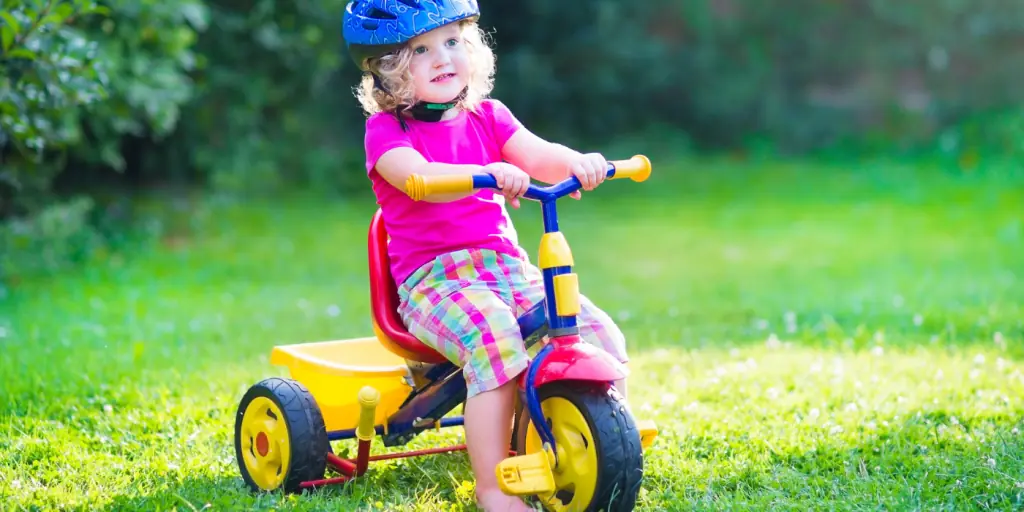
Practicing in a Safe Environment
When teaching your child to ride a tricycle, it’s important to start in a safe and secure environment. Look for a flat and grassy area where your child can practice without the risk of falling on hard surfaces. A backyard or a park with a soft surface is an ideal place to begin.
Before starting, make sure your child is wearing appropriate safety gear, such as a helmet and knee pads. Explain to your child the importance of wearing safety gear and how it can protect them from injuries.
When practicing, be patient and don’t rush your child. Give them time to get comfortable with the tricycle and build confidence. It’s normal for your child to make mistakes and fall a few times, so be supportive and encourage them to keep trying.
If your child is having trouble balancing or steering, try breaking down the process into smaller steps. For example, you can start by having your child practice sitting on the tricycle and pushing themselves forward with their feet. Once they’re comfortable with that, you can move on to pedaling and steering.
Finally, no matter which riding toy they are using, make sure to supervise your child at all times and keep an eye out for any potential hazards in the area. With a safe and supportive environment, your child can learn to ride a tricycle with confidence and joy.

